This latest release offers significant improvements for the purchasing process with DocuWare. Optimized is the matching of table data from different sources, as well as the extended cross-check of invoice items and the new functions for forms and XML invoices bring customers many advantages.
Tables in DocuWare forms
Component: DocuWare Forms
You can now insert tables in DocuWare web forms. This simplifies the structured entry of data and lays the foundation for automated processing.
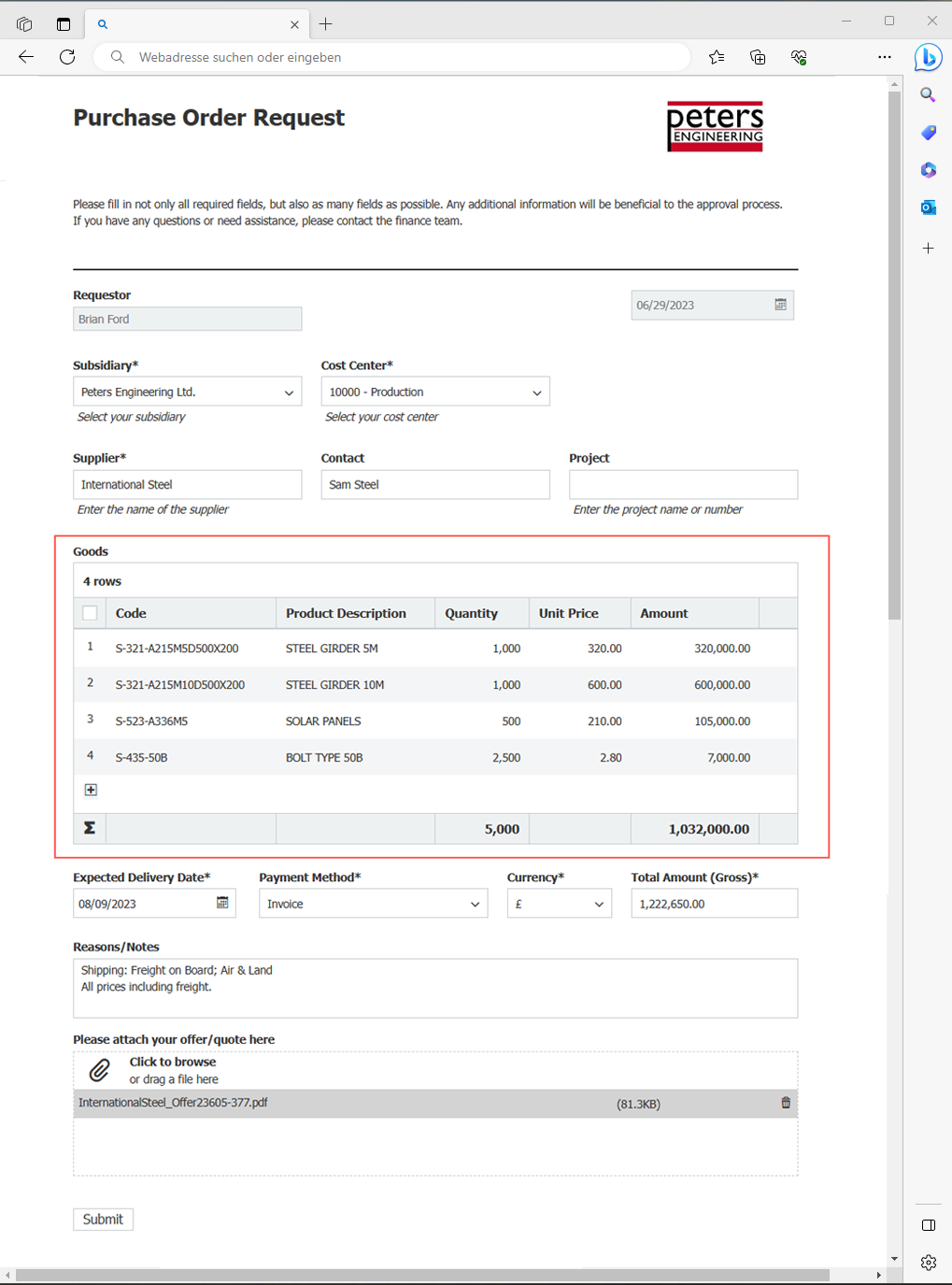
Purchase order request web form with a table for entering the desired items
Applications
Purchase order form: Table for entering requested items (first step in the purchase-to-pay process)
Travel expense form: Table to record expenses during a business trip, such as restaurant meals and taxi rides.
Order form: Table for the items the customer wants to order
Benefits
Form users can easily enter data in a structured format
Structured data can be easily processed in automated workflows
Here's how
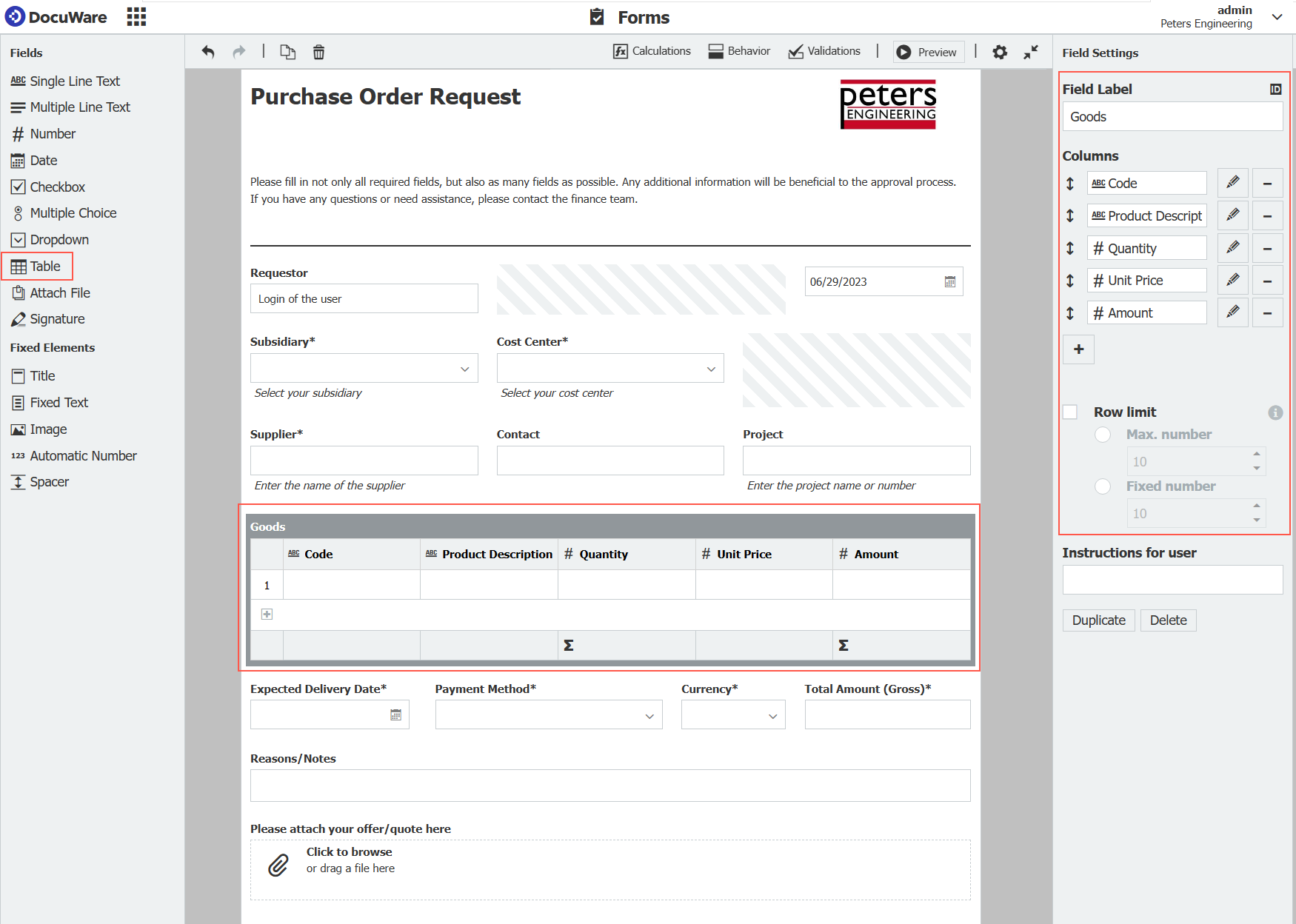
Table in Forms Designer
You insert tables just like any other field by dragging and dropping them from the Form Designer toolbar. You can have multiple tables in a form, each with a maximum of 12 columns. Single line text, numeric, date, and drop-down are supported as column formats. The number of rows the user can fill in can be limited to a maximum or set to a fixed value. The absolute maximum is 200 rows per table.
Table fields are not currently supported in merge forms. In the Knowledge Center you can find detailed information about tables in forms.
Import XML invoice data into index tables
Component: Import
When importing an XML invoice, the listed items can now be captured into index tables. This helps processing e-invoices within your purchase to pay workflow.
Application
You regularly import invoices into DocuWare and want them to be processed in the workflow with the item data written in the index tables.
Benefits
All item data from e-invoices are automatically captured
Automatic processing in workflow
No manual work – eliminate data entry errors
Here's how

Your sample XML invoice has at least two items. Just connect one of them to a row of the index table and all other invoice items will be automatically entered in the table. Your XML invoices can follow any format supported by DocuWare (e.g. ZUGFeRD, XRechnung, FatturaPA or FacturX).
Workflow: Advanced matching of table data
Component: Workflow Designer
You can now match tables from different table sources based on arithmetic expressions. Using this powerful data adaptation tool, you can make your line-item matching even more flexible and robust: It allows you to eliminate the most common sources of errors or additional effort when digitizing invoices or other documents.
Applications
Match by similarity and avoid errors due to scanning defects
You have a purchase order with an item number ending with “M5”. However, due to an OCR mistake the PDF of the scanned invoice shows “MS” instead. Nevertheless, the invoice is processed correctly by DocuWare because you have set up the line-item matching based on similarity using the fuzzy string comparison function.
Compare two strings and return their similarity, for example:
- Peter Peterson _~ Peter Pitersen = 93% similarity
- S523-A336MS ~ S523-A336M5 = 95% similarityMatch with regular expressions and adapt item IDs and strings to your requirements
The item ID of the purchase order has numbers and characters. In contrast the item ID on the invoice has only numbers. To match only the numbers, you remove the characters of the ID using regular expressions.
Change a string according to a pattern, for example:
- Remove all digits from an input string based on the pattern \d: Something123Anything => SomethingAnything
- Split an input string based on the pattern \d+: Something123Anything => Something, Anything
- Check whether a string matches the pattern [A-Z0-9]\d{3}-\d{3}: A123-456 => true
Plus, using LINQ methods, you can now also more easily check whether there are discrepancies in the quantity or price in the status column, for example.
Benefits
Accelerates the process
Allows deviations and more tolerance
Makes matching more robust and flexible
Here's how
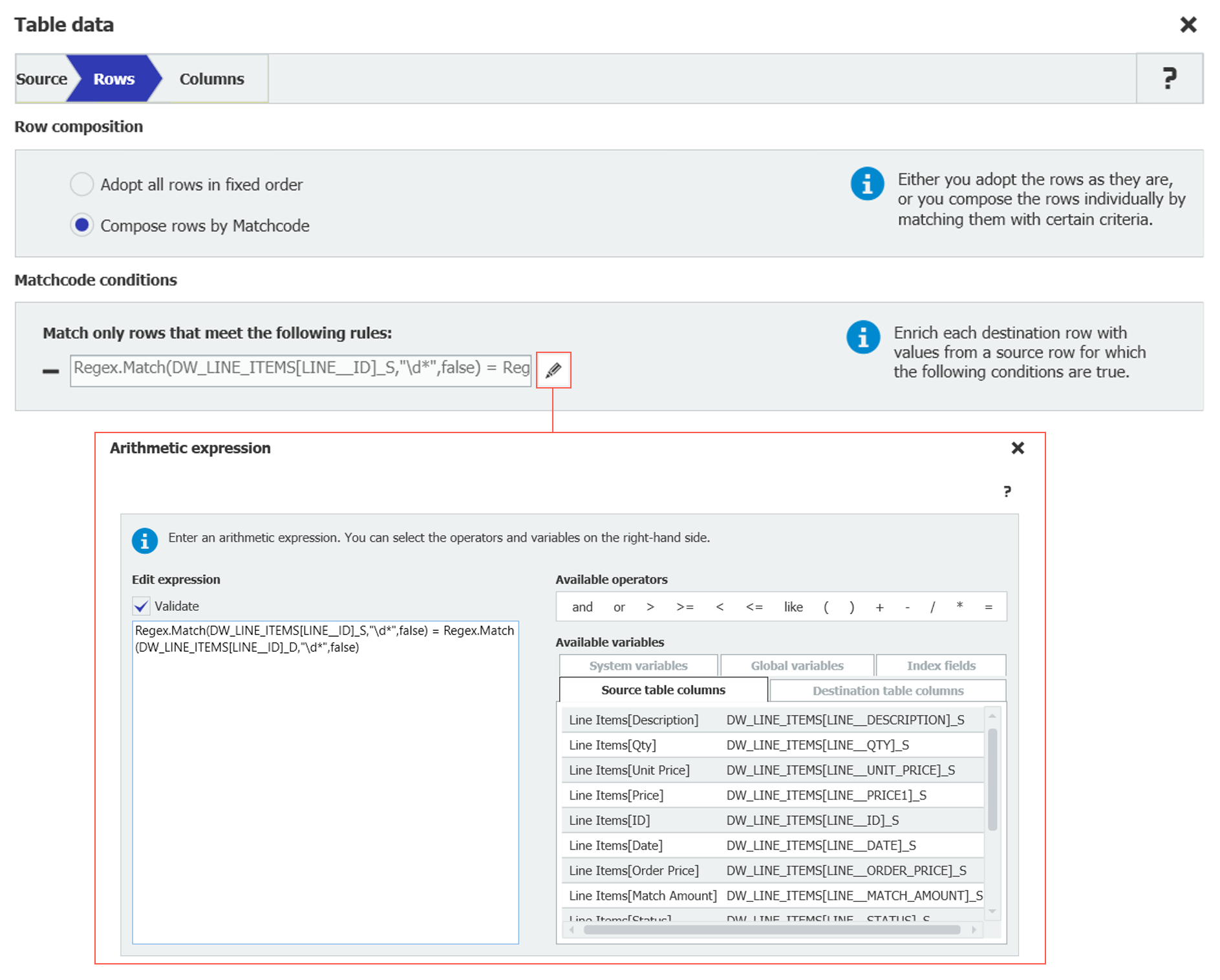
Go to Table data > Rows > Matchcode conditions and define the matching rules using arithmetic expressions. The result must be "true" or "false" (Boolean).
For the arithmetic expressions, see the Workflow Expression Parser documentation. A configuration example for a three-way match workflow can be found here.
Assign data from file cabinets to index tables
Component: Workflow Designer
For assigning data to index tables, you can now select File cabinet as a source.
Application
Match the line items of an index table with existing index entries from a file cabinet and, if necessary, take over these values into the index table of the current document.
Benefits
Assign data faster
More flexibility
Here's how

Match data from more documents and merge them into one index table
Component: Workflow Designer
When assigning data to the index table of a document, you can now obtain data from up to 20 different documents of the same type. In addition, up to 10 values can be matched per data assignment and you can sum up numerical values in the decimal column.
Applications
There are multiple purchase orders whose items are combined into one invoice. You retrieve the data from all purchase orders to perform a 2-/3-way match with the invoice.
You want to determine the quantity of an item that was not delivered all at once and therefore exists on multiple delivery bills. You assign the totaled quantity and perform a 2-/3-way match.
Benefits
Automate complex purchase-to-pay scenario
Save time
Here's how
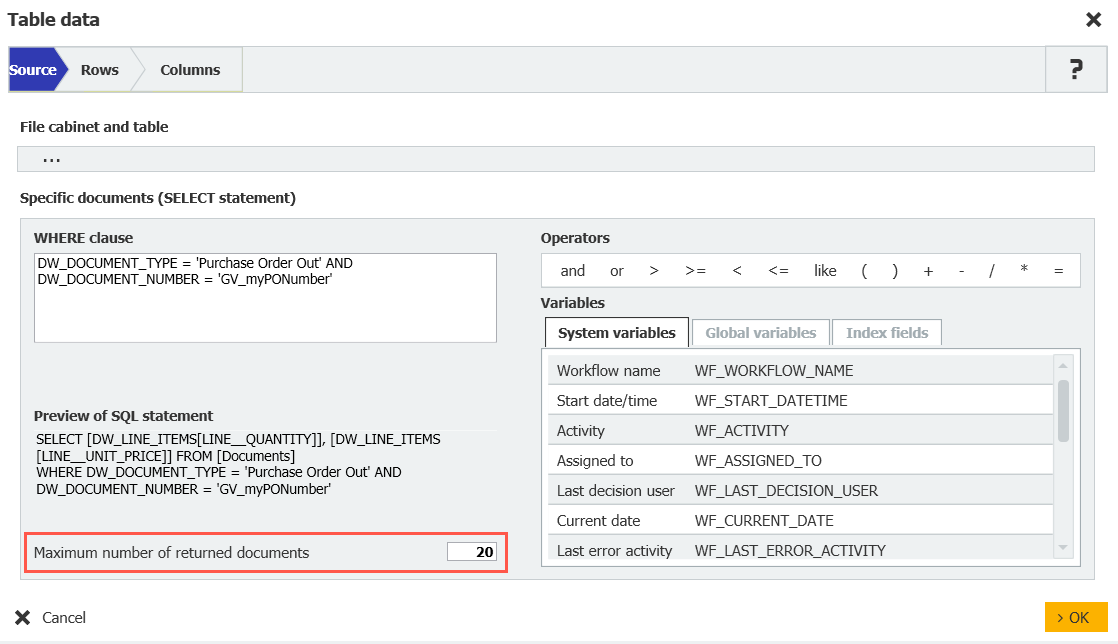
On the Source tab, you specify the number of documents from whose metadata you retrieve data.
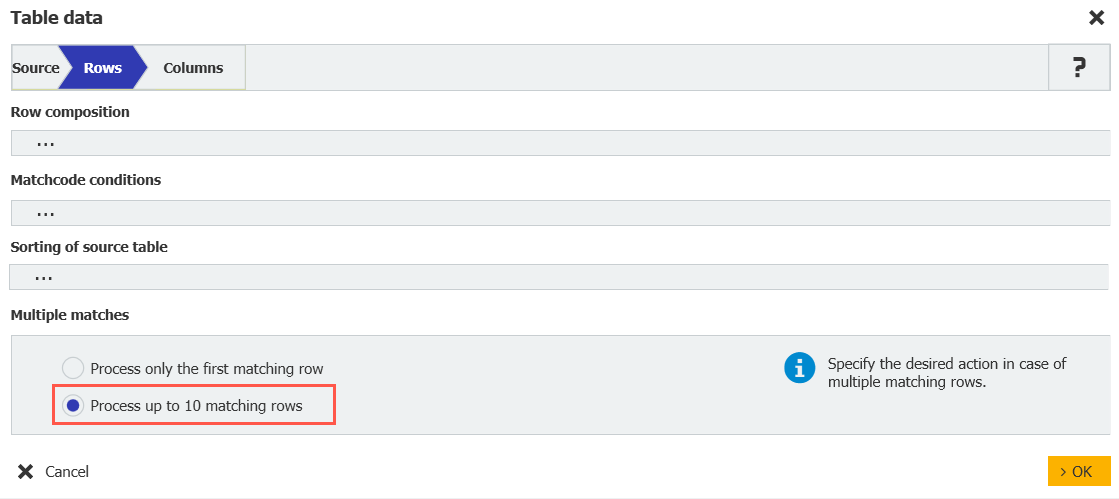
Under Rows in the new Multiple matches section, enable Process up to 10 matching rows.
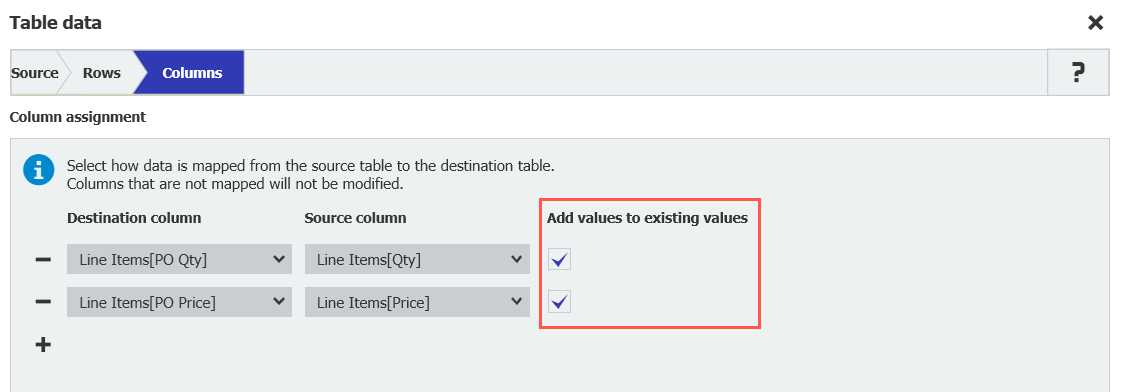
On the Columns tab, activate the option to add more values to already existing ones.
Platform REST API for web services
Component: Workflow Designer
In the Web Services activity, you can connect to the DocuWare Platform REST API now in addition to external SOAP and REST web services. Choose from predefined endpoints for operations on file cabinets, documents, and users.
Moreover, you no longer need to worry about authentication, as this is done automatically by DocuWare.
Applications
After an incoming invoice has been processed in the accounting software, you want to automatically set a "Paid" stamp on the document in DocuWare.
You dynamically grant access rights to members of the same department as the requestor after his or her order has been approved.
You want to query the absence status of a particular user to decide what to do next in the workflow.
Benefits
Further automation of sub-processes
Set up tasks faster with more options
Here's how
When using the predefined endpoints, you see a simplified configuration: the fields you still need to fill in are highlighted, such as the file cabinet ID and the document ID.
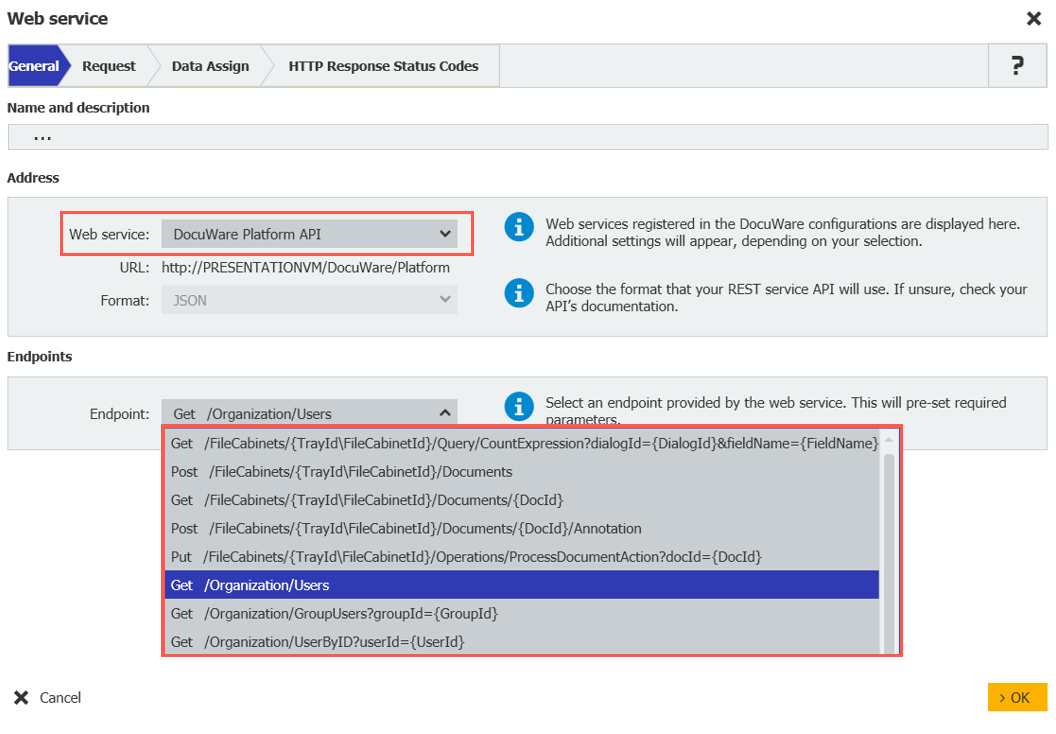
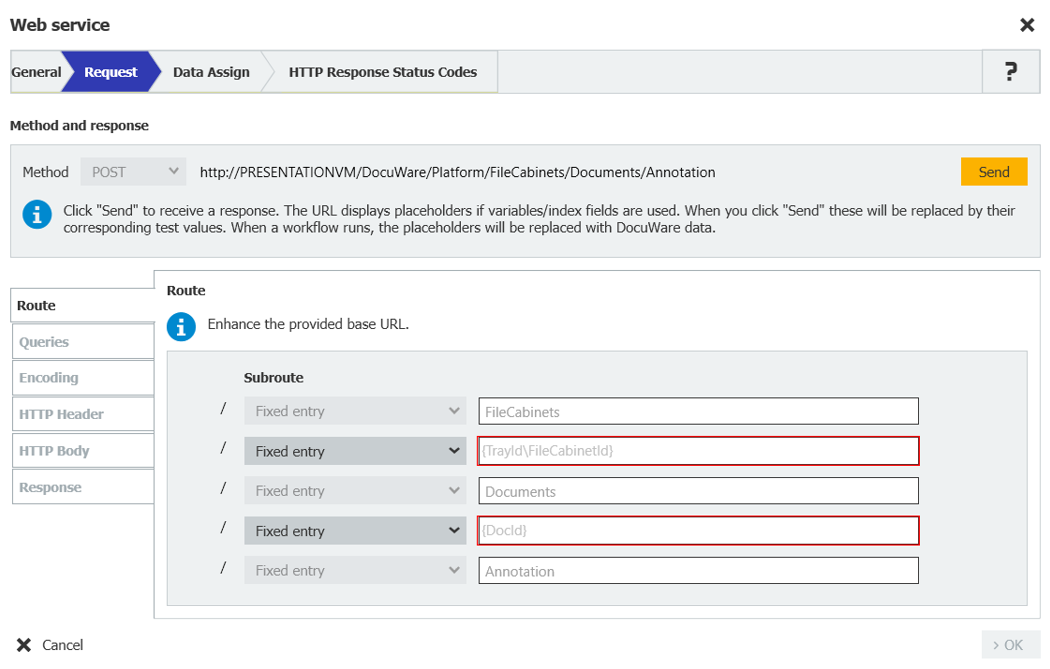
Forms: Behavior of hidden fields
Component: DocuWare Forms
When using web forms in combination with merge forms, there is a new feature regarding hidden fields: You can now specify whether content from fields that are hidden in the web form should be transferred to the merge form. Until now, such values were always transferred.
Application
Order process: By entering data in the web form, a completed order form can be generated.
An example scenario with configuration instructions is described in detail in the Knowledge Center.
Benefits
Consistent presentation and use of input data
Faster processes
Here's how
The option “Show values from hidden fields on PDF” is on the “Output” tab of the Merge Form Designer. It is unchecked by default for new forms. For existing forms, it is checked by default so that the behavior is not changed by the update.
The function was added retroactively in DocuWare version 7.8 and is already available for all DocuWare Cloud customers. For on-premises, it is part of all versions from 7.8.0.12972 (May 25, 2023) on.